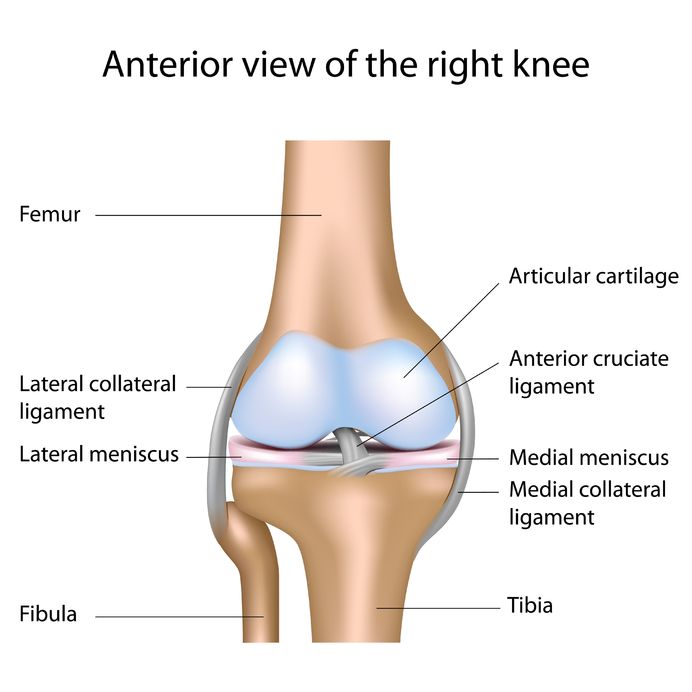Knee Injuries and A Torn Meniscus
What is a Meniscectomy and what should you expect?
By ACE Physical Therapy and Sports Medicine Institute
Tips For Knee Injuries.
- Seek advice and treatment from a Physical Therapist if you hurt your knee.
- Keep your leg musculature in “good shape” to help prevent damage to the cartilage.
- Warm up prior to participating in activities that involve impact or twisting and turning actions.
- Train your legs by performing agility type drills prior to “playing the game.”
- Returning to full activity should be slow and steady. High impact or twisting and turning motions can re-injure the knee if performed too soon.
Knee injuries are common, affecting athletic and non-athletic people alike. If you are suffering from severe pain in your knee, experiencing swelling, loss of strength, motion and function, and even limping, you should seek professional treatment right away. Knee injuries are the number one reason people visit an orthopaedic surgeon.
One of the most common knee injuries is a torn meniscus. In many cases, this is treated with a surgical procedure known as a meniscectomy. In the following sections, we explore the causes, treatment, and rehabilitation of a torn meniscus.
The Knee Joint and the Torn Meniscus
The knee joint consists of three bones: Femur, Tibia and Patella. The distal end of the Femur has two round condyles which rest on the proximal, flat Tibial Plateau. The space is made more secure with wedges of fibrocartilage placed on the outer edge of the Plateau’s surface. This fibrocartilage is the meniscus and there is one on the medial and lateral aspect of the Tibial Plateau. The menisci create a passive stability in the joint and absorb shock during impact activities.
Sometimes it cannot withstand the shock. Injuries to the meniscus occur when there is too much sheer or compressive force applied to the fibrocartilage. If you twist or rotate while putting your full weight on the knee, you can tear the meniscus. Also, a hit from outside the knee can lead to tearing, and some people suffer from a torn meniscus due to degenerative processes related to aging.
A torn meniscus needs blood supply for healing, but the menisci have a limited blood supply. As a result, the damaged area often doesn’t have an adequate blood supply for healing. The menisci have been described by surgeons to have three different zones relating to its blood supply. The inner most (white zone) has no blood flow, the middle zone (grey zone) indicates that it might have enough blood flow to heal and the outer zone (red zone) has blood flow and will most likely heal if it is torn.
When the meniscus does not heal, the damaged cartilage can eventually cause mechanical “locking” of the joint and damage to the smooth articular Hyaline cartilage (covers the condyles and plateau), leading to more instability in the injured knee joint. If the cartilage does not heal, the patient is advised to have surgery. This procedure is performed arthroscopically almost 100% of the time.
Treating a Torn Meniscus
If a tear occurs, the doctor might not order diagnostic tests immediately. Many patients will participate in a formal Physical Therapy program for several weeks to reduce the symptoms. If the symptoms resolve, the patient is discharged. They continue with an exercise program at home and return to the doctor if their knee symptoms appear again.
Should the patient return to the doctor, an MRI will be ordered and a decision will be made regarding the need for surgery. The surgical procedure usually takes less than one hour to complete, and formal Physical Therapy should begin within the 3-7 days post-op.
What to Expect After Meniscectomy
Weight Bearing and braces: The patient will be weight-bearing as tolerated following the partial meniscectomy (the entire meniscus is never removed except in extraordinary circumstances) and might have a knee brace on for a couple of days. The use of crutches will be determined by the amount of pain that the patient is experiencing and the ability of the patient to “control” the muscles in their involved leg. If the patient can walk with a mild limp, they can go without the crutches.
PAIN: Everyone has a different pain tolerance. In most cases, the arthroscopic procedure produces minor surgical trauma and the removal of the piece of meniscus does not produce a lot of swelling or pain. The meniscus is not innervated therefore the removal of a piece of fibrocartilage cannot produce a pain signal. The pain arises from the surgical trauma.
DRIVING: Depending on which leg is involved will determine if and when someone can return to the driver’s seat. The doctor will determine when the patient is ready to drive. The patient must not be taking narcotic pain medication. If the patient has an automatic transmission car, they can return to driving more quickly. The patient is usually able to resume driving within the first week following the surgery.
WORK: The return to work is dependent of the physical demands of the patient’s job. Most patients can return to some form of limited duty work within a few days following the partial meniscectomy.
SLEEPING: Most patients don’t have difficulty sleeping within a day or two of the surgery. It is recommended having the involved leg elevated for the first 72 hours when the patient is sleeping to aid in the reduction of inflammation.
HAVING FUN: Returning to recreational activities, hobbies, sports or physical workouts usually occurs within 4-8 weeks. Activities that involve high impact or twisting and turning actions are not attempted until the later part of the formal rehabilitation process. The patient should have good muscular control, minimal to no swelling and full motion with minimal pain within the involved knee.
Physical Therapy for Meniscectomy
In most cases, all surgical patients will benefit from a formal Physical Therapy program. Physical Therapy rehabilitation following the partial meniscectomy surgery is geared at reducing swelling and pain, increasing range of motion and eventually restoring full strength in the involved leg.
The Physical Therapist helps the patient to understand the treatment phases as well as accompanying symptoms. In addition, the Physical Therapist develops and adjusts the patient’s exercise program from the most basic to highly complex and demanding.
The initial 2-3 week treatment period focuses on reducing the swelling and pain and restoring full motion. The remainder of the formal rehabilitation process focuses on strength development and restoring full functional capability of the involved leg.
The knee joint is susceptible to injury due to the amount of force that is applied to the structures of the joint during life’s activities. If the forces are too great for the fibrocartilage menisci to handle, damage can occur. If the damage is severe and conservative treatment does not resolve the symptoms surgery might be needed to restore the pre-injury status of the joint. Partial meniscectomy surgeries are highly successful. The patient usually does not suffer a great deal of pain or swelling and can return to their pre-injury lifestyle and activities within two months of the surgery date.
Read more articles on our main website blog at: ACE-pt.org/blog
Vist our main website at: www.ACE-pt.org


